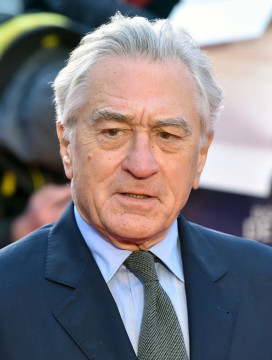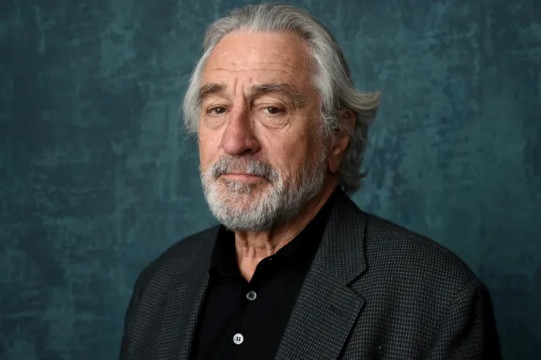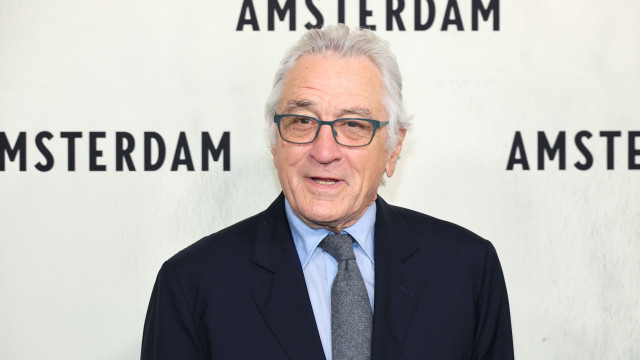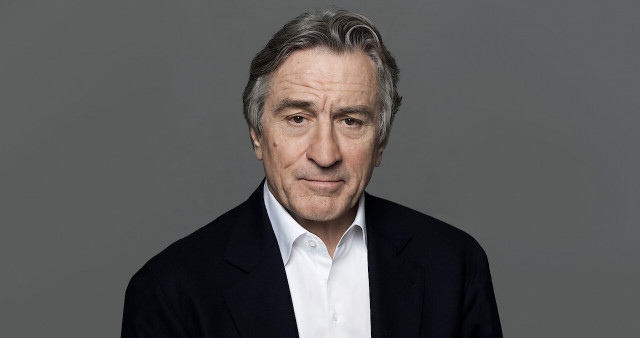PERSON: Robert De Niro
Position
Actor
Biography
Robert Anthony De Niro (/də ˈnɪəroʊ/ də NEER-roh, Italian: [de ˈniːro]; born August 17, 1943) is an American actor and film producer. Known for his collaborations with Martin Scorsese, he is considered to be one of the greatest and most influential actors of his generation. De Niro is the recipient of various accolades, including two Academy Awards, a Golden Globe Award, the Cecil B. DeMille Award, and a Screen Actors Guild Life Achievement Award. He received the Kennedy Center Honors in 2009, and the Presidential Medal of Freedom from U.S. President Barack Obama in 2016.
De Niro studied acting at HB Studio, Stella Adler Conservatory, and Lee Strasberg’s Actors Studio. His first credit screen role was in Brian de Palma’s Greetings (1968). De Niro’s first collaboration with Scorsese was with the crime drama film Mean Streets (1973). De Niro earned two Academy Awards, one for Best Supporting Actor for his role as Vito Corleone in Francis Ford Coppola’s The Godfather Part II (1974) and the other for Best Actor portraying Jake LaMotta in Scorsese’s drama Raging Bull (1980). De Niro was Oscar-nominated for his performances in Taxi Driver (1976), The Deer Hunter (1978), Awakenings (1990), Cape Fear (1991), Silver Linings Playbook (2012), and Killers of the Flower Moon (2023).
He is also known for his film roles in Bang the Drum Slowly (1973), 1900 (1976), The King of Comedy (1982), Once Upon a Time in America (1984), Brazil (1985), The Mission (1986), Angel Heart (1987), The Untouchables (1987), Goodfellas (1990), This Boy’s Life (1993), Mary Shelley’s Frankenstein (1994), Heat (1995), Casino (1995), Jackie Brown (1997), Joker (2019), and The Irishman (2019). He directed and acted in both A Bronx Tale (1993) and The Good Shepherd (2006). His comedic roles include Hi, Mom! (1970), Midnight Run (1988), Wag the Dog (1997), Analyze This (1999) and its sequel, Analyze That (2002), the Meet the Parents films (2000–2010), and The Intern (2015).
Also known for his television roles, De Niro portrayed Bernie Madoff in the HBO film The Wizard of Lies (2017), earning a nomination for Primetime Emmy Award for Outstanding Lead Actor in a Limited Series or Movie. He received further Emmy Award nominations for producing the Netflix limited series When They See Us (2019), and for portraying Robert Mueller on Saturday Night Live.
De Niro and producer Jane Rosenthal founded the film and television production company TriBeCa Productions in 1989, which has produced several films alongside his own. Also with Rosenthal, he founded the Tribeca Film Festival in 2002. Many of De Niro’s films are considered classics of American cinema. Six of De Niro’s films have been inducted into the United States National Film Registry by the Library of Congress as “culturally, historically, or aesthetically significant” as of 2023. Five films are featured on the American Film Institute’s (AFI) list of the 100 greatest American films of all time. Timeout magazine’s list of 100 best movies included seven of De Niro’s films, as chosen by actors in the industry.
>> Wikipedia
De Niro studied acting at HB Studio, Stella Adler Conservatory, and Lee Strasberg’s Actors Studio. His first credit screen role was in Brian de Palma’s Greetings (1968). De Niro’s first collaboration with Scorsese was with the crime drama film Mean Streets (1973). De Niro earned two Academy Awards, one for Best Supporting Actor for his role as Vito Corleone in Francis Ford Coppola’s The Godfather Part II (1974) and the other for Best Actor portraying Jake LaMotta in Scorsese’s drama Raging Bull (1980). De Niro was Oscar-nominated for his performances in Taxi Driver (1976), The Deer Hunter (1978), Awakenings (1990), Cape Fear (1991), Silver Linings Playbook (2012), and Killers of the Flower Moon (2023).
He is also known for his film roles in Bang the Drum Slowly (1973), 1900 (1976), The King of Comedy (1982), Once Upon a Time in America (1984), Brazil (1985), The Mission (1986), Angel Heart (1987), The Untouchables (1987), Goodfellas (1990), This Boy’s Life (1993), Mary Shelley’s Frankenstein (1994), Heat (1995), Casino (1995), Jackie Brown (1997), Joker (2019), and The Irishman (2019). He directed and acted in both A Bronx Tale (1993) and The Good Shepherd (2006). His comedic roles include Hi, Mom! (1970), Midnight Run (1988), Wag the Dog (1997), Analyze This (1999) and its sequel, Analyze That (2002), the Meet the Parents films (2000–2010), and The Intern (2015).
Also known for his television roles, De Niro portrayed Bernie Madoff in the HBO film The Wizard of Lies (2017), earning a nomination for Primetime Emmy Award for Outstanding Lead Actor in a Limited Series or Movie. He received further Emmy Award nominations for producing the Netflix limited series When They See Us (2019), and for portraying Robert Mueller on Saturday Night Live.
De Niro and producer Jane Rosenthal founded the film and television production company TriBeCa Productions in 1989, which has produced several films alongside his own. Also with Rosenthal, he founded the Tribeca Film Festival in 2002. Many of De Niro’s films are considered classics of American cinema. Six of De Niro’s films have been inducted into the United States National Film Registry by the Library of Congress as “culturally, historically, or aesthetically significant” as of 2023. Five films are featured on the American Film Institute’s (AFI) list of the 100 greatest American films of all time. Timeout magazine’s list of 100 best movies included seven of De Niro’s films, as chosen by actors in the industry.
>> Wikipedia
ClipsBank
Full
Compact
NewsBase
Full
Compact
RadioBank
Full
Compact
PodBank
Full
Compact
TranscriptBank
Full
Compact
No data found









